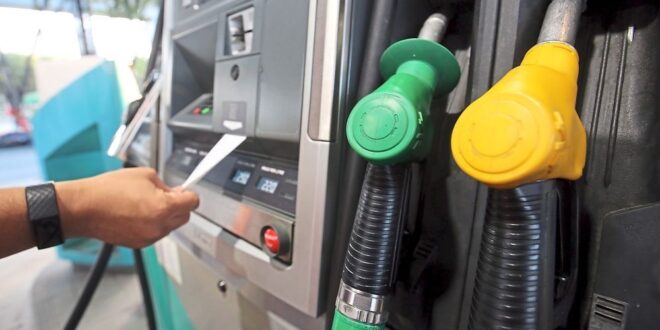PETALING JAYA: The implementation of subsidy reforms in Malaysia, particularly where fuel is concerned, have become a sore topic for many as the issue is continuously politicised.
However, Hong Leong Investment Bank (HLIB) Research said while it is tough to move from a blanket approach to a targeted one, it is a necessary pain to shift towards ensuring the country’s fiscal health perks up.
Subsidies and social assistance (S&SA) had tripled from RM23bil in 2010 to an estimated RM64bil in 2023.
To top that, the country’s fiscal deficit of RM99bil in 2021 and 2022 were the highest in history, mainly on the back of the abolishment of the goods and services tax (GST) in 2018, the Covid-19 pandemic in 2020 and surging energy prices in 2022.
“With GST unlikely to stage a comeback anytime soon, subsidy reforms have become even more crucial if the 12th Malaysia Plan’s fiscal deficit target of 3.5% to 3% by 2025 is to be achieved,” it said.
The research firm agreed that while the current subsidies come with good intentions, it is not productive because it offers temporary aid with little impact on the nation’s long-term development trajectory.
It said the S&SA allocated in 2022 was almost equivalent at 94% of development expenditure (DE) and was significantly higher versus the allocation for education, healthcare and housing, among others.
“But with a more efficient and targeted subsidy framework, these funds could instead be reallocated to increase DE which has longer-term developmental benefits to the rakyat,” it noted.
Another key challenge of the current fuel subsidy format is the fact that it isn’t being utilised by the right group of people despite it being the largest chunk of subsidies in 2022, totalling RM45.2bil.
It was reported that the top 20 society enjoyed fuel subsidies, M40 at 41% and B40 at only 24%, which meant one group was under consuming it.
“As subsidies also cause selling prices to be lower versus the true market price, this has led to the problem of smuggling, which is said to be particularly rampant for diesel.
“This causes a leakage of subsidy funds, benefiting smugglers instead of aiding the rakyat,” HLIB Research said.
The research firm also said that overconsumption of fuel leads to higher emissions, something that should be a concern.
“Fuel in Malaysia is the cheapest in Asean excluding Brunei. Pump prices in Malaysia are -64% and -56% lower versus the regional average for RON95 and diesel, respectively. So it is unsurprising that Malaysia’s per capita consumption of petrol is the highest in Asean,” it noted.
HLIB Research said instead of taxing it as a product with negative externalities, it is heavily subsidised here, thus amplifying its negative qualities, evident by Malaysia’s per capita CO2 emissions from transport being the highest in Asean and 178% higher than the region’s average.
As such, it said the government’s fuel subsidy rationalisation efforts will focus on two main goals – ensuring the right groups receive the aid and preventing leakages of subsidy funds.
“While the impending subsidy reforms could take several possible forms, the simplest would be to float RON95 and diesel to market prices, applicable to all consumers,” it said.
To do this, a key tool for subsidy reforms, the Central Database Hub (Padu), was launched to assist the government to policy-plan and distribute resources.
“Padu covers nearly 300 types of data under the federal government, with data from state and local governments being gradually included,” it said.
Despite the cumulative sign-ups being less than satisfactory, HLIB Research said it accelerated sharply this week, as a total of 5.69 million people have now logged their details onto Padu.
“At this juncture, we understand that the government isn’t going to implement any ‘carrot or stick’ approach to boost sign-ups.
“Given that Padu is already integrated with the Subangan Tunai Rahmah database, which has nine million recipients, it can use this information to proceed with targeted subsidies first,” it noted.
Additionally, akin to the “floating price + cash aid” that was implemented back in 2008, a similar structure can be done whereby a one-off cash subsidy is offered to eligible private vehicle owners.
Meanwhile, HLIB Research said should fuel subsidies be completely removed for RON95 and diesel, this will yield the government annual savings of RM28.7bil.
“Hypothetically, if fuel subsidies were removed for the entire year, the fiscal deficit would reduce from -4.3% of GDP. This would immediately bring the fiscal deficit to below its -3.5% to -3.0% target by 2025,” it said.
According to the research firm, the removal completely will induce higher fuel prices that could be beneficial for the electric vehicle (EV) sector.
“In a recent global survey by Deloitte, ‘lower fuel cost’ was cited as the top reason for getting an EV. In fact, this reason was the highest for South-East Asia (68% of respondents), in which Malaysia was weighted 16% in the region’s survey,” it said.
And although EV adoption is still at a nascent stage in Malaysia at 10,200 units, it has been growing exponentially.
 BeritaKini.biz Berita Viral Terkini di Malaysia
BeritaKini.biz Berita Viral Terkini di Malaysia





